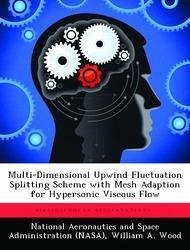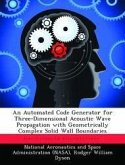A multi-dimensional upwind fluctuation splitting scheme is developed and implemented for two-dimensional and axisymmetric formulations of the Navier-Stokes equations on unstructured meshes. Key features of the scheme are the compact stencil, full upwinding, and non-linear discretization which allow for second-order accuracy with enforced positivity. Throughout, the fluctuation splitting scheme is compared to a current state-of-the-art finite volume approach, a second-order, dual mesh upwind flux difference splitting scheme (DMFDSFV), and is shown to produce more accurate results using fewer computer resources for a wide range of test cases. A Blasius flat plate viscous validation case reveals a more accurate upsilon-velocity profile for fluctuation splitting, and the reduced artificial dissipation production is shown relative to DMFDSFV. Remarkably, the fluctuation splitting scheme shows grid converged skin friction coefficients with only five points in the boundary layer for this case. The second half of the report develops a local, compact, anisotropic unstructured mesh adaptation scheme in conjunction with the multi-dimensional upwind solver, exhibiting a characteristic alignment behavior for scalar problems. The adaptation strategy is extended to the two-dimensional and axisymmetric Navier-Stokes equations of motion through the concept of fluctuation minimization.








